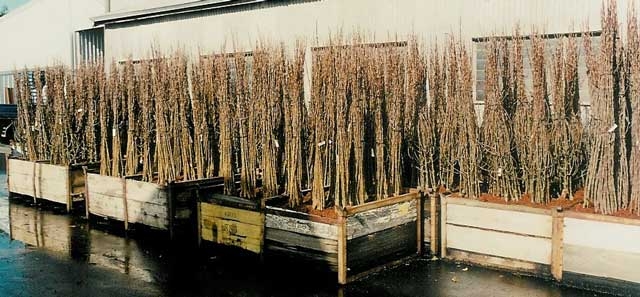Management of the soil definitely effects root development. It is well known that roots of mature deciduous fruit trees grow in flushes. The end of the initial peak in root growth usually corresponds with the beginning of active shoot growth.
Facts about roots and root growth (continued from last month)
- Management of the soil definitely effects root development. It is well known that roots of mature deciduous fruit trees grow in flushes. The end of the initial peak in root growth usually corresponds with the beginning of active shoot growth.
The root system is customarily inactive during summer. After harvest in autumn or cessation of shoot growth, root growth starts again, but is not as strong as in early spring.
The seasonal periodicity in the production of new (white, unsuberised) roots has not only been attributed principally to fluctuations in temperature and water content in the soil when fruit trees grow under natural rainfall, the periodicity of new root growth also occur even under frequent irrigation and apparently favourable soil temperatures. - The flush of white unsuberised roots in the autumn depends on the presence of leaves, because the new roots need photosynthates for energy and to produce new cells. Hence, defoliation, even 4–6 weeks before natural leaf-fall, can greatly decrease the concentration of white roots.
- Fruit trees generally develop fairly shallow root systems with many horizontal roots and a few vertical roots.
- Rooting depth is very variable and affected primarily by soil conditions. Soil conditions also have a big effect on root growth and root distribution within the soil.
The parts of the soil profile that are rich in water, oxygen and nutrients inevitably encourage more active root growth than the less fertile, less oxygen areas. - High-density plantings result in increased root densities, but less root weight, length and volume per tree.
- Dry soils slow down root growth. Irrigation increases root density, especially in the surface layers of the soil beneath the fruit trees.
Targeted irrigation can affect root growth and distribution of roots.
Drip irrigation has given variable effects on root growth possibly due to differences in soil type. Soils differ significantly in their hydraulic conductivity and therefore in the area of soil wetted beneath the irrigation dripper.
Often the roots of fruit trees are concentrated within 600 mm of the drippers. - Soil compaction which decreases aeration when soil is wet and physically impedes root penetration, limits root growth.
See this article in Tree Fruit Sept 2017






















